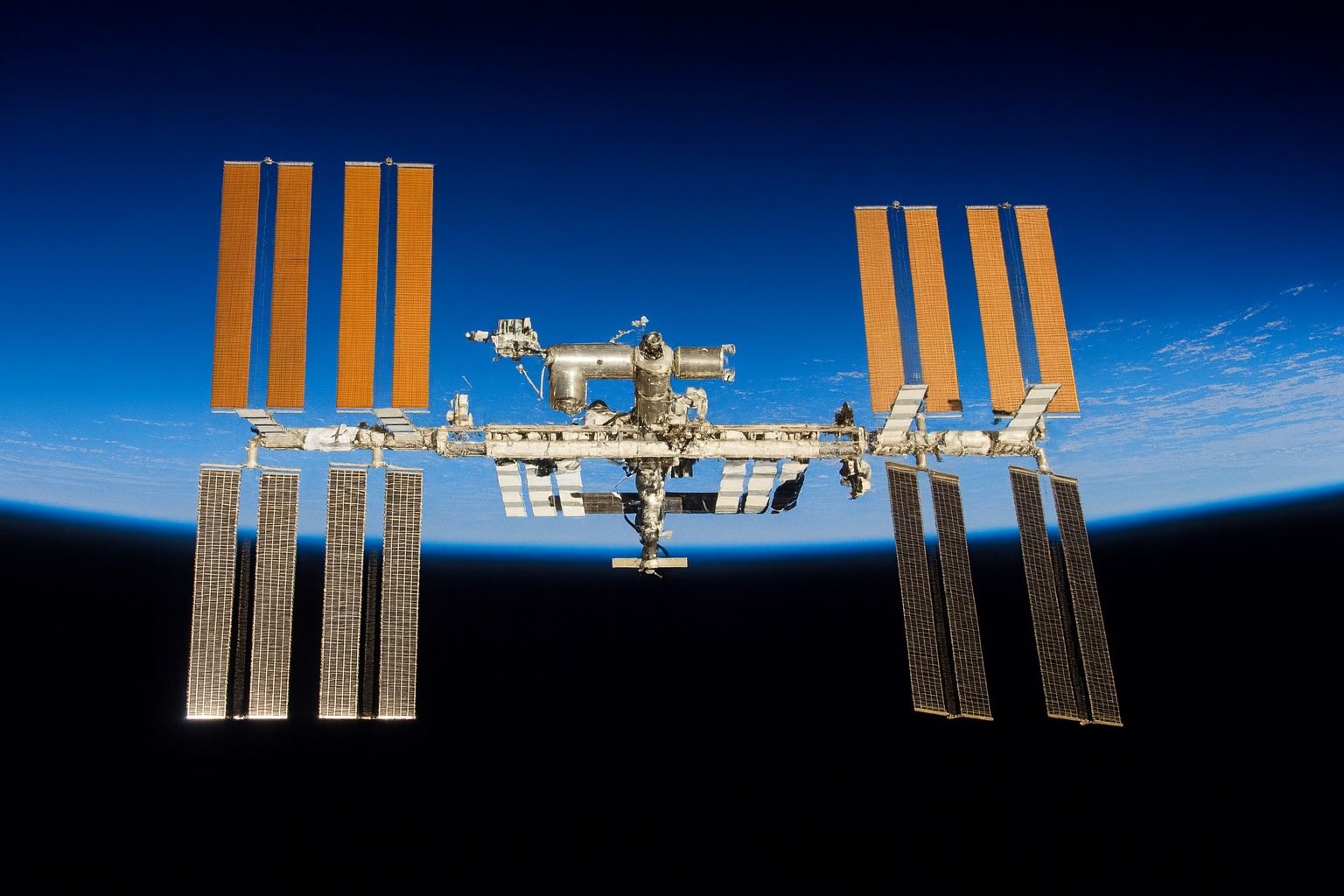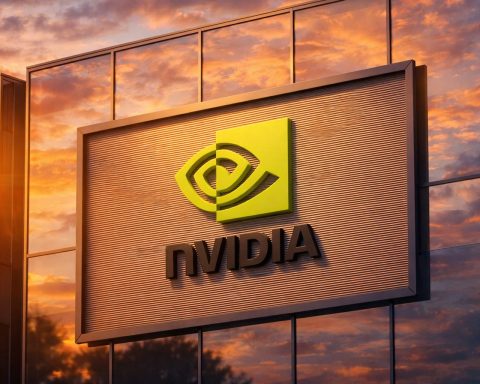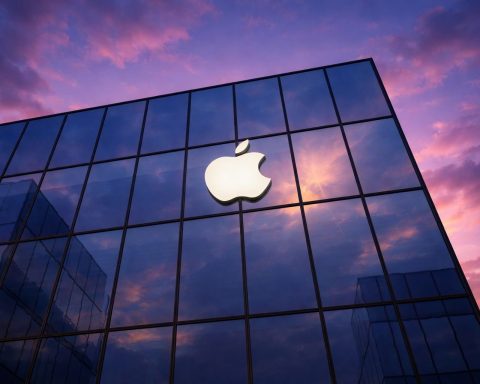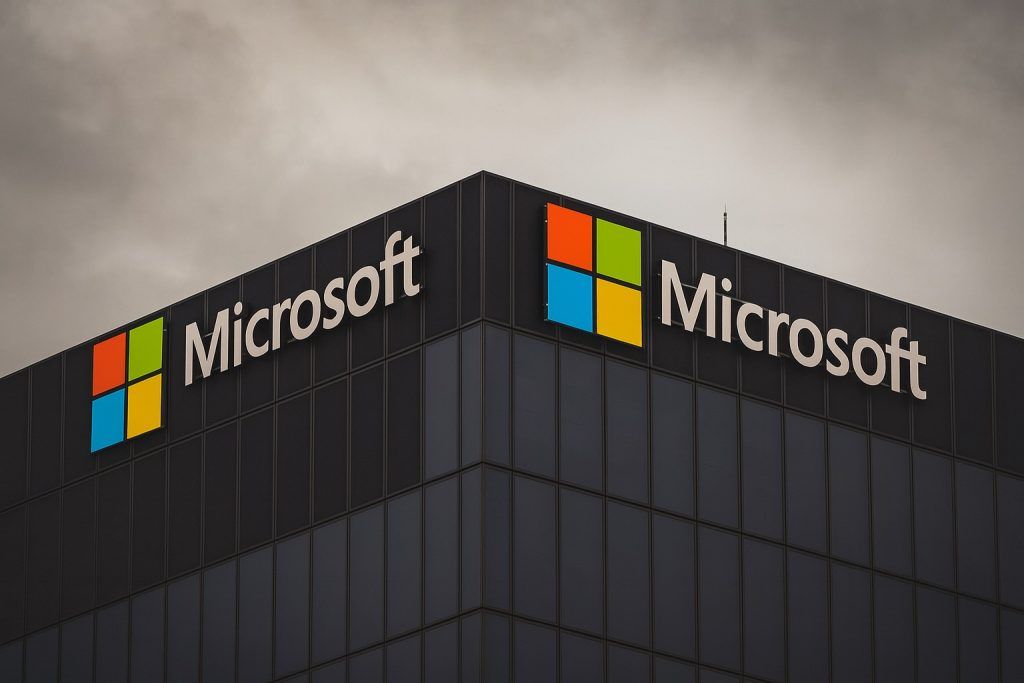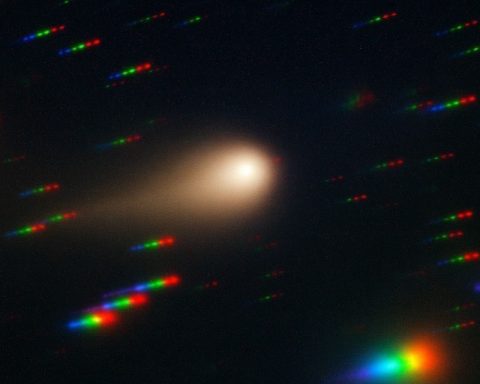- ISS built deep‑space know‑how – NASA and its partners have kept astronauts living in orbit for more than 25 years. Research on the International Space Station (ISS) has taught us how human bodies adapt to micro‑gravity and has demonstrated advanced life‑support systems, 98 % water recycling and 3D‑printing of metal parts [1]. These breakthroughs will allow crews to survive long missions to the Moon and Mars [2].
- A proving ground for lunar and Martian missions – The ISS hosts experiments that test inflatable habitats, regolith‑based 3D printing, robotic assistants, DNA sequencing and laser communications [3]. Data from these experiments and organ‑on‑chip research will be applied to Artemis II and later missions [4].
- Commercialisation is accelerating – NASA will retire the ISS by 2030, opening a new market for privately built stations. A Phase 2 call for proposals in late 2025 aims to fund multiple commercial stations, with the winners to be announced in early 2026 [5]. The agency plans to buy services from these stations in Phase 3 through competitive contracts [6].
- Four main competitors – Axiom Space, Starlab Space, Orbital Reef (Blue Origin/Sierra Space) and Vast are developing stations. Axiom has flight hardware under construction and plans to attach its first module to the ISS in 2027 [7]. Starlab passed a preliminary design review in March 2025 and aims to launch a single‑module station on SpaceX’s Starship by 2029 [8]. Orbital Reef’s progress has slowed while its partners focus on other projects [9]. Vast’s small Haven‑1 station is scheduled for no earlier than May 2026 and will test commercialization and Starlink connectivity [10].
- Critics urge a lighter touch – The U.S. National Academies and experts argue that NASA should qualify rather than certify commercial stations. Over‑prescriptive certification, similar to the commercial crew program, could delay station availability and increase costs. Qualification would set performance standards while letting companies use their own methods to meet them [11] [12].
- China is gaining ground – The Tiangong space station, roughly 20 % the mass of the ISS, has been continuously occupied since 2021. In September 2025 Chinese astronauts installed new debris shields during a spacewalk [13]. If the ISS is deorbited without a ready replacement, Tiangong could become humanity’s only long‑term outpost [14].
- Dream Chaser delays – Sierra Space’s Dream Chaser cargo spaceplane, intended to supply the ISS and Orbital Reef, has slipped to late 2026 and will fly a free‑flying demonstration mission instead of docking with the ISS [15]. NASA is no longer obligated to order a fixed number of resupply flights under the revised contract [16].
- Vast’s funding edge – Vast is backed by billionaire Jed McCaleb and claims its first Haven‑1 station is fully funded [17]. The company sells crew time and payload slots and will leverage SpaceX for launch, crew transport and Starlink connectivity [18].
ISS: A Launch Pad for Deep Space Exploration
When the International Space Station was first assembled in 1998, NASA envisioned it as more than a laboratory. It would be a bridge into the solar system—a place to master living and working in space, develop life‑support systems and test technologies before committing astronauts to long voyages. In 2025, with the ISS still orbiting 400 kilometres above Earth, that vision is clearer than ever.
Mastering a New Environment
Micro‑gravity is a harsh teacher. On the ISS, astronauts must adapt to drinking in weightlessness, sleeping in vertical sleeping bags and maintaining fitness when bones and muscles quickly weaken. Research has explored how spaceflight affects eyes, brain, bones, muscles and the cardiovascular system, yielding countermeasures like exercise regimens and new medical protocols [19]. Experiments have advanced fluid dynamics, combustion and materials science; lessons learned have improved consumer products on Earth (from detergents to medical implants) and refined life‑support hardware.
NASA has achieved 98 % water recycling aboard the ISS by recapturing condensate and even converting urine into potable water [20]. More than 50 plant species—including leafy greens, grains and legumes—have been grown in orbit [21]. Astronauts have used 3D printers to fabricate tools and, in 2024, produced the first metal part in space [22]. These capabilities are foundational for long‑duration missions: carrying years’ worth of spares and food is impractical, so Mars crews will need to make what they need and grow at least part of their diet.
Preparing for Artemis and Mars
The ISS is now a testbed for technologies destined for the Moon and Mars. Experiments evaluate inflatable habitats, autonomous robots that detect hazards, and regolith‑based 3D printing to make structures from lunar soil [23]. DNA sequencers monitor microbial life, while laser communications systems beam data back at high rates [24]. Research on organ‑on‑chips and compact medical devices will help astronauts monitor their health on deep‑space missions, and radiation detectors validated on the ISS flew on the uncrewed Artemis I mission to certify Orion’s design [25]. These cross‑program links illustrate why the ISS remains relevant: it de‑risks technologies before they are needed tens of millions of kilometres from Earth.
End of an Era: Retirement and the Deorbit Vehicle
NASA and its partners plan to retire the ISS by 2030, culminating in a controlled deorbit using a U.S. Deorbit Vehicle. USA Today noted that this transition has opened a new commercial space race—private stations will take up where the ISS leaves off [26]. In 2025 NASA issued a draft Announcement for Phase 2 of its Commercial Low Earth Orbit Destinations (CLD) program, with a goal of awarding funded agreements in early 2026 [27]. These agreements will pay companies milestone payments to design and demonstrate new stations, including a crewed demonstration lasting at least 30 days.
The plan culminates in Phase 3, when NASA will buy “station services” through Federal Acquisition Regulation contracts, formally accepting the designs and certifications of the stations [28]. A timeline published by NASA notes that Axiom Space received a contract in 2020 to attach a module to the ISS, that Blue Origin, Northrop Grumman and Starlab (Voyager/Airbus/Mitsubishi) were funded in 2021, and that additional partners were selected in 2023 and 2024 [29]. NASA will issue the Phase 2 solicitation in late 2025 and award multiple Space Act Agreements in early 2026 [30].
The New Commercial Contenders
Axiom Space
Axiom is the only CLD partner currently building flight hardware. Its first module, the Payload Power Thermal Module (AxPPTM), is being manufactured in Turin, Italy; parts originally intended for later modules are being repurposed to accelerate the schedule [31]. In December 2024 Axiom changed its assembly plan so that only AxPPTM will dock to the ISS; subsequent modules will rendezvous in free space [32]. The first module is expected to launch in 2027 and a second module in 2028 [33]. Axiom has conducted multiple private astronaut missions to the ISS, giving it operational experience and making it a strong competitor for NASA’s Phase 2 award [34]. However, reports have highlighted financial challenges that may constrain its ability to build and operate a full station [35].
Starlab Space
Starlab is a joint venture of Voyager Space, Airbus, Mitsubishi and MDA Space. In March 2025 the company passed a Preliminary Design Review, validating its updated design for a rigid metallic module [36]. Starlab’s single‑module station, which will launch on SpaceX’s Starship by 2029, eliminates the multi‑launch complexity of modular designs [37]. The station’s docking ports allow expansion, and CEO Tim Kopra has suggested that additional Starlabs could be launched if demand warrants [38]. Starlab has cultivated international partnerships and already secured flights from international suppliers, potentially giving it a market advantage [39] [40].
Orbital Reef (Blue Origin & Sierra Space)
Orbital Reef has been the most enigmatic competitor. Sierra Space’s Dream Chaser cargo plane, which will be used for resupply and crew transport, has been delayed to late 2026 and will perform a free‑flying demonstration mission rather than docking with the ISS [41]. NASA’s revised contract no longer obligates the agency to order a specific number of resupply flights [42]. The station’s progress has slowed: human‑in‑the‑loop testing was completed in April 2025, but the Preliminary Design Review appears to have slipped behind schedule [43]. Sierra Space continues testing its inflatable LIFE modules, while Blue Origin is focused on launching its heavy‑lift New Glenn rocket and lunar lander [44]. Without accelerated investment, Orbital Reef risks falling behind its rivals.
Vast: A Small but Ambitious Challenger
Vast is taking a minimum viable product approach. Its first station, Haven‑1, is a compact module designed to support four astronauts for short missions and provide small‑scale research and manufacturing facilities. Originally slated for 2025, the launch has slipped to no earlier than May 2026 [45]. Vast sells crew time and “Haven‑1 Lab” payload slots and leverages SpaceX’s Falcon 9, Crew Dragon and Starlink network to offer an integrated transportation and communications package [46]. The station is fully funded by billionaire Jed McCaleb [47] and serves as a stepping stone to a larger Haven‑2 complex later in the decade. Haven‑1 will not spin but is designed to test technologies for future artificial‑gravity habitats [48].
The Policy Debate: Certification vs. Qualification
In September 2025 the space policy analyst Steve Hoeser argued that NASA should qualify rather than certify commercial stations. Hoeser warns that replicating the strict certification process used in the Commercial Crew Program could add years of delays and billions in costs, potentially leaving the U.S. without a station between the ISS and commercial replacements [49]. He notes that NASA lacks statutory authority to certify private stations and that over‑regulation might create a perception that “NASA‑certified” stations are inherently safer, discouraging investment in other platforms [50]. Qualification would set safety and performance requirements while allowing companies to propose innovative solutions. Hoeser urges NASA to act as an enabler rather than a gatekeeper, collaborating with industry to create a robust low‑Earth‑orbit economy [51].
This debate underscores a tension between public oversight and commercial agility. NASA must ensure crew safety—its brand and congressional support depend on it—but it also needs multiple providers to avoid dependency on a single company. The agency’s Phase 2 solicitation indicates some flexibility: it will use Space Act Agreements rather than conventional contracts, allowing milestone payments and more freedom for industry [52]. Still, formal certification will occur in Phase 3 [53], raising questions about how stringent those requirements will be.
China’s Tiangong: A Competitive Benchmark
While the U.S. wrestles with policy and funding, China’s Tiangong station has quietly become a formidable presence. About one‑fifth the mass of the ISS, Tiangong consists of three modules and supports six‑month crew rotations. Chinese astronauts performed spacewalks in May and August 2025 to install debris shielding and inspect external equipment [54]. The station has hosted international experiments and is open to global partners; Chinese media reports indicate plans for future expansions. Space analysts warn that if the ISS is deorbited without a U.S. replacement, Tiangong could become humanity’s only permanent outpost in low Earth orbit [55]. This possibility has geopolitical implications: a Chinese‑led station would attract experiments, astronauts and diplomatic influence.
The Road Ahead
Humanity is at a turning point in its spacefaring journey. After a quarter century on the ISS, NASA and its partners are ready to hand the baton to private industry. The station’s legacy—demonstrated life‑support systems, 98 % water recycling, 3D‑printed metal parts and a rich archive of biological and physical research—has laid the foundation for voyages to the Moon and Mars [56] [57]. The commercial space race will determine whether that knowledge translates into a thriving low‑Earth‑orbit economy or a gap in human presence.
The contenders each offer different visions: Axiom builds on ISS experience but faces financial scrutiny; Starlab promises a ready‑to‑go station launched in one piece; Orbital Reef must overcome delays and resource constraints; Vast focuses on lean, quickly deployable habitats with deep SpaceX integration. NASA, for its part, must strike the right balance between oversight and flexibility. The next few years will reveal whether the agency can foster a competitive marketplace while maintaining safety and reliability.
Meanwhile, China’s Tiangong continues to operate, demonstrating that low‑Earth‑orbit stations need not be government‑owned but must be nurtured over time. For aspiring explorers, researchers and entrepreneurs, the message is clear: the golden age of space stations is far from over—it’s just beginning, and the winners will shape humanity’s path to the stars.
In summary, the report provides a comprehensive analysis of the International Space Station’s legacy and its critical role in preparing humanity for deep-space exploration. Key innovations such as 98 % water recycling, 3D-printed metal components and microgravity medical research have laid the technical foundation for missions to the Moon and Mars [58] [59]. The report also highlights how ISS experiments on inflatable habitats, regolith-based manufacturing and advanced communications are directly informing NASA’s Artemis program and beyond [60].
The second half of the report explores the burgeoning commercial space race set to replace the ISS by 2030. It details the progress and challenges facing leading contenders like Axiom Space, Starlab Space, Orbital Reef and Vast, noting that Axiom’s modules are furthest along but financially uncertain, while Starlab’s single-launch design could leapfrog competitors [61]. Policy discussions over whether NASA should qualify or certify private stations are also addressed, with experts warning that heavy-handed certification could delay U.S. leadership and concede ground to China’s Tiangong station [62]. The report concludes that the coming years will be decisive, blending geopolitical stakes with market competition to determine who will shape the next era of human spaceflight.
References
1. www.nasa.gov, 2. www.nasa.gov, 3. www.nasa.gov, 4. www.nasa.gov, 5. www.nasa.gov, 6. www.nasa.gov, 7. www.spacescout.info, 8. www.spacescout.info, 9. www.spacescout.info, 10. www.economyinsights.com, 11. www.thespacereview.com, 12. www.thespacereview.com, 13. www.space.com, 14. www.designdevelopmenttoday.com, 15. spaceflightnow.com, 16. spaceflightnow.com, 17. www.economyinsights.com, 18. www.economyinsights.com, 19. www.nasa.gov, 20. www.nasa.gov, 21. www.nasa.gov, 22. www.nasa.gov, 23. www.nasa.gov, 24. www.nasa.gov, 25. www.nasa.gov, 26. eu.usatoday.com, 27. www.nasa.gov, 28. www.nasa.gov, 29. www.nasa.gov, 30. www.nasa.gov, 31. www.spacescout.info, 32. www.spacescout.info, 33. www.spacescout.info, 34. www.spacescout.info, 35. www.spacescout.info, 36. www.spacescout.info, 37. www.spacescout.info, 38. www.spacescout.info, 39. www.spacescout.info, 40. www.spacescout.info, 41. spaceflightnow.com, 42. spaceflightnow.com, 43. www.spacescout.info, 44. www.spacescout.info, 45. www.economyinsights.com, 46. www.economyinsights.com, 47. www.economyinsights.com, 48. www.economyinsights.com, 49. www.thespacereview.com, 50. www.thespacereview.com, 51. www.thespacereview.com, 52. www.nasa.gov, 53. www.nasa.gov, 54. www.space.com, 55. www.designdevelopmenttoday.com, 56. www.nasa.gov, 57. www.nasa.gov, 58. www.nasa.gov, 59. www.nasa.gov, 60. www.nasa.gov, 61. www.spacescout.info, 62. www.thespacereview.com
